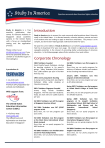
The SAT: Reasoning Test is required for admission into nearly every school in the United States as well as some of the universities in Singapore. If a school says that they do not require the SAT: Reasoning Test then you should investigate further – does the school not require the test because of valid reservations about its efficacy or because they will accept just anyone?
The SAT: Reasoning Test should be taken a couple times at the least and the universities receive a report with all of your scores, with most taking the highest Math and highest Verbal scores, even if these were achieved on different test dates. It is not irregular for American students to take the SAT: Reasoning Test three or four times. Singaporean students should take the test at least twice by the time they sit their ‘A’ levels. Obviously, it is best to avoid taking the SAT when you are burdened with a major load of other academic commitments.
The SAT: Subject Tests are one-hour long tests on individual subjects. While the SAT: Reasoning Test is broad-based, the SAT: Subject Test are specialized. Most of the top schools in the United States require students to have up to three SAT: Subject test results in addition to the SAT: Reasoning Test. These tests can be taken on the same dates as the SAT: Reasoning Test and up to three subject tests can be taken on one sitting. However, you cannot take both on the same test date so be sure to plan accordingly.
Top schools ask applicants to take the Math 1C or 2C and one to two of any of the other tests – which normally would include at least one of the sciences (Biology, Chemistry or Physics). The science tests are easier than ‘O’ levels, so fear not.
Some students are tempted to take both the Math 1C and Math 2C tests. The Math 2C test is harder than the Math 1C and you should just take one or the other depending on your strength in Math.
Others are tempted to take the Mandarin SAT Subject test as they have studied it as a mother tongue. Don’t do this! It will have the undesired effect of making you look lazy.
Testtakers Singapore runs preparation programs for the SAT: Reasoning Test and conducts individual tutoring for the English Literature and Math tests.
The TOEFL shouldn’t be required for Singaporean students as English is the medium of instruction. However, it isn’t a bad idea to take it just to get it out of the way (some schools are ignorant of the Singaporean education system). The TOEFL is intended for non-native English speakers and should be a simple test for most people. The TOEFL can be taken year-around as it is a computer-based test.

